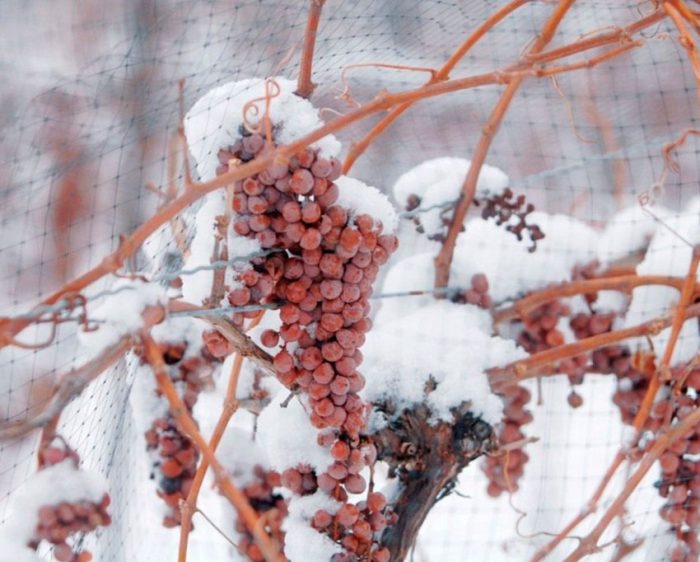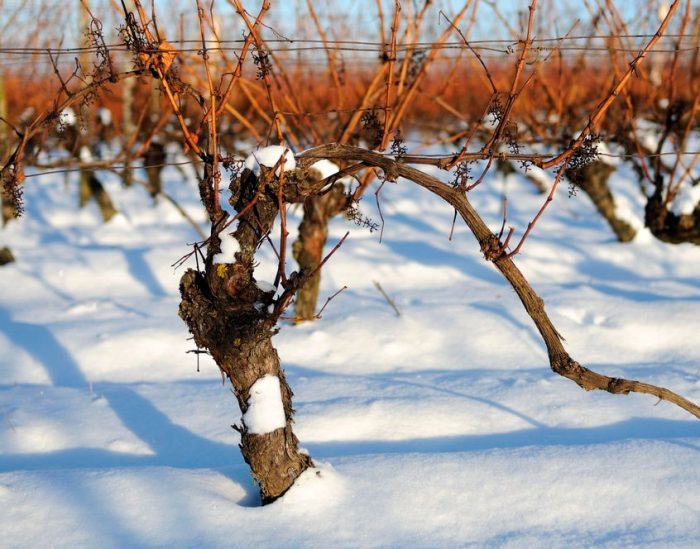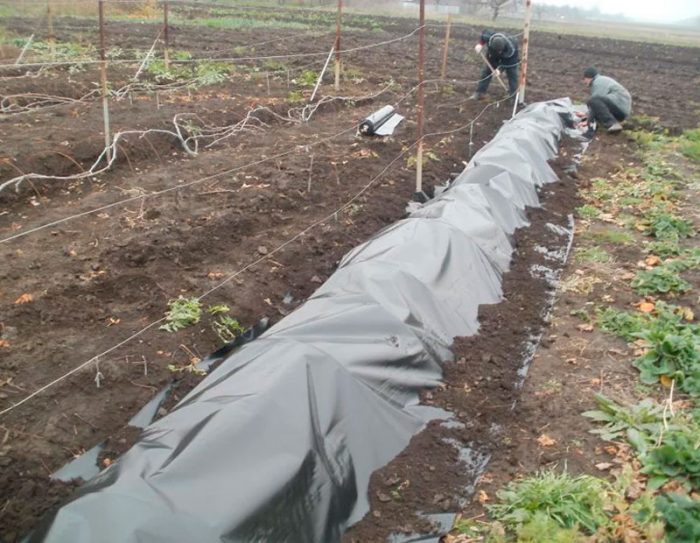A very popular garden culture of grapes, grown in the middle latitudes, as well as in the southern regions, needs special preparation for wintering, as well as proper shelter. If you do not know the basic rules, then next year you can not only lose the grape harvest or get sick bushes after wintering, but even ruin the plants. Below it will be told about both the basic rules for preparing bushes for winter, and about the mistakes often made by novice winegrowers.
Content
Preparing grapes for wintering
What time do they hide
If winters in your area are mild and warm, then the grapes will be able to winter without shelter. But in the Volga region, in the Urals and in the middle latitudes, it is imperative to cover it. The hiding time of grapes is influenced by both the peculiarities of the climatic conditions in the region and the weather in the current autumn. There are several indicators that are recommended to be guided by:
- The bushes are not afraid of frosts down to minus 15 degrees. But if it is colder than minus 20 degrees outside, then not a single living eye will remain on the vine.
- The root system of this plant is less resistant to frost than the eyes and stems. With prolonged freezing of the soil to minus 6 degrees, the fibrous parts are severely injured at the roots, and they can no longer fully recover. As a result, this leads to the death of the plant.
That is why in regions with severe frosts (below minus 15-20 degrees) in winter, the bushes are covered without fail. If the winters are rather mild (frosts not lower than minus 15 degrees), then the grapes can do without shelter, but it is still better to cover the surface of the root area with a thick layer of mulch.
Basic rules for preparing for winter
When the crop is harvested, the bushes should be trimmed for sanitary purposes. All the same, diseased or damaged stems will have to be cut, if not in autumn, then in spring. In addition, if you do not prune in the fall, then healthy shoots may suffer in winter. You will also need to cut out all the young shoots that did not have time to ripen, since they will still die in the winter.
Cut bushes must be treated for preventive purposes against various diseases. As a rule, a solution of iron or copper sulfate (3-5%) is used for this. For the treatment of grapes, a calm, fine day is chosen, while it should not be colder than 5 degrees, otherwise there will be no proper effect from spraying the bushes with pesticides.
After pruning and processing, the bushes are fed with a nutrient mixture consisting of wood ash and potassium sulfate. Remember, this does not have to be the only grape dressing. They are held regularly throughout the season. Please note that chlorine-containing fertilizers are not suitable for such a plant.
Clear the area of all plant residues that can be sent to the compost pit, burned or disposed of in another convenient way.
Shelter for grapes
There are three methods of frost protection for grapes depending on the climatic characteristics of your region: full cover, partial cover and hilling.
As a rule, grape varieties with low frost resistance, which are cultivated in southern regions with mild winters, are hilled. This helps protect them from light frost. There is nothing complicated in hilling bushes: first they are cut off, then preventive treatment is carried out, they are fed, and only then a special earthen embankment is made around the plant, the height of which can vary from 10 to 25 centimeters. A similar mound needs to be done near each bush. After that, it must be carefully spilled with water, trying not to destroy it.
Also, young seedlings that were planted in the soil in the current season are subjected to hilling. The bushes are gently bent to the soil surface, securely fix them in this position. Then an earthen mound is poured onto the base of each bush, the height of which should be about 20 centimeters.
To huddle grapes, you need a lot of soil. It is recommended to take it from the grooves that are made in the aisles, and at least one and a half to two meters should be retreated from the bushes. Otherwise, you risk exposing or injuring the plant's root system. When the snow begins to melt in spring, water will drain into these grooves, which will save the root system from moisture stagnation.
If in the middle latitudes forecasters promise not too frosty winter, then you can resort to partial shelter of the vineyard. In this case, only the sleeves, trunks and the base of the fruiting stems should be sheltered from frost. As a result, all the lower parts of the bush must be protected from freezing. For shelter, a non-woven material is used, which is wrapped around the trunk and shoots. Please note that the covering layer must be at least 40 millimeters thick. This method is good in that it is easy and simple, but if a severe frost suddenly hits, the bushes may suffer and even die.
Full cover of the vineyard will help protect the plants from the worst frost. An air-dry shelter method is used. After sanitary pruning, preventive treatment and feeding, the bushes are removed from the trellises and placed on the surface of the soil, which must be covered with mulch (flying leaves, boards, sawdust, spruce branches or other suitable material for this) so that the grapes do not come into contact with the soil surface ... The thickness of the mulch layer can vary from 20 to 40 millimeters (depending on the strength of the frost in the region).
After the lashes are laid on the soil surface, they are fixed in this position, and then they are thrown with a thick layer of thin brushwood, straw or spruce branches. Take a non-woven material (lutrasil, spunbond, agrospan or plastic wrap) and cover the grapes with it. At the edges, the covering material is securely fixed with bricks or heavy stones, otherwise it can be disrupted by a gust of wind. If the vineyard is covered with a film, then in addition a layer of soil should be poured on top of it. A layer of snow that has fallen out in winter will help protect plants from freezing.
Common mistakes
Gardeners who have only recently started cultivating grapes, often preparing it for wintering, make various mistakes that can lead to sad consequences. The most common mistakes:
- too much soil is poured over the shelter;
- without hilling the bottom of the trunk, they immediately begin to shelter the bushes for the winter;
- make a very thin layer of mulch, on which the vine removed from the trellis is then laid;
- they select a shelter method that is not suitable for a specific grape variety;
- too delayed with the shelter of bushes;
- cover plants without cutting, feeding and treating them with fungicidal preparations;
- during hilling, soil is taken near the trunk, which contributes to the exposure of the root system.
Because of such errors, the grapes can get sick, the root system or eyes can die, as a result the gardener will receive a meager harvest or there will be no fruit at all. And young seedlings, incorrectly sheltered for the winter, often die.


Watch this video on YouTube












